Pest management in rose crops is a crucial aspect of successful rose cultivation. Roses, known for their beauty, are often attacked by insect pests that can damage these exquisite flowers. In this blog, we’ll explore the major insect pests that threaten roses and the best insecticides to protect your precious blooms. By understanding these essential aspects, you can ensure your rose garden remains vibrant and pest-free.
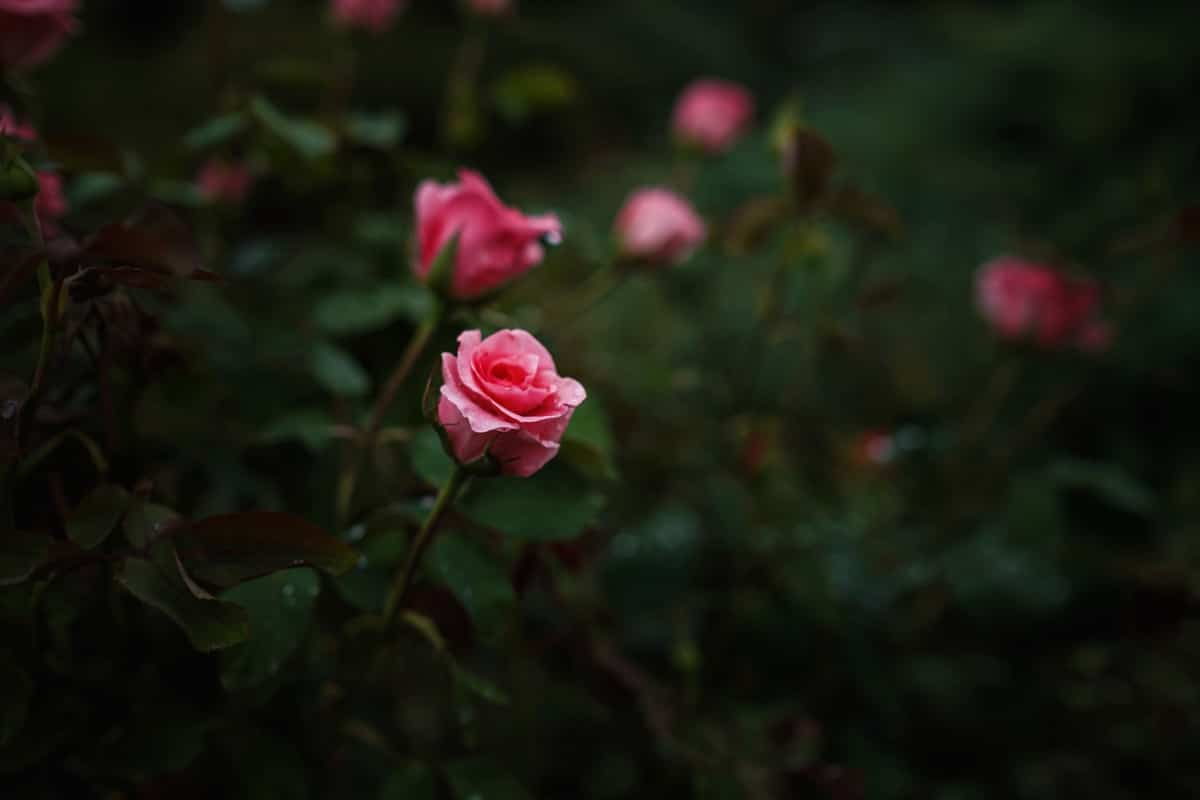
Pest Management in Rose
What is Pest Management in Rose Crop?
Roses, beloved for their symbolism of love and beauty, have a rich history as one of the world’s most cherished flowers. In India, they’re a symbol of love and a valuable commercial crop. However, roses face a formidable array of foes, including diseases, insects, nematodes, and weeds, all of which threaten the quality and yield of these exquisite blooms.
Growing growers employ a combination of techniques to maximize rose cultivation’s economic returns while being environmentally responsible. These include cultural practices, biological controls, and eco-friendly measures. When necessary, the judicious use of chemicals is also considered. By managing these growth-reducing factors effectively, rose growers can ensure the health of their roses and a prosperous market while maintaining ecological balance.
Common Rose Pests and How to Manage Them
| Pest | Damage | Management |
| Aphids | Deformed growth, sap feeding, sooty mold | Use neem oil or soapy water, encourage predators |
| Whiteflies | Yellow patches, sooty mold, weakened plants | Use sticky traps, avoid excessive nitrogen |
| Thrips | Silvery petals, bud damage, stunted growth | Use spinosad, avoid excessive nitrogen |
| Scale Insects | Stem damage, tissue destruction, plant drying | Cut affected branches, apply insecticides |
| Spider Mites | Stippling, leaf curling, webbing | Encourage predatory mites, use insecticides |
| Japanese Beetles | Eaten blooms, disfigured flowers | Handpick, use protective mesh, apply repellents |
| Caterpillars | Skeletonized leaves, flower damage | Handpick, use spinosad, apply Bt products |
| Grasshoppers | Leaf and stem feeding, plant damage | Keep garden clean, use insecticidal sprays |
| Leafcutting Bee | Circular holes in leaves, minor damage | Cover plants, eliminate breeding sites |
| Flower Chaffer Beetle | Blooms damage, night feeders | Handpick, use pyrethroid sprays |
| Rose Midge | Blackened, distorted shoots, no blooms | Destroy infested tips, apply imidacloprid |
| Blackfly | Crinkling, curling, leaf puckering | Use soap or oil sprays, methyl demeton, or neem |
| Castor Semilooper | Voracious foliage feeding | Handpick, apply chlorpyriphos or lindane |
| Grasshoppers | General plant feeding, varied damage | Keep weeds under control, use insecticides |
In case you missed it: Arka Savi Rose Cultivation: Yield Per Acre, Growing Cost, and Profit Analysis
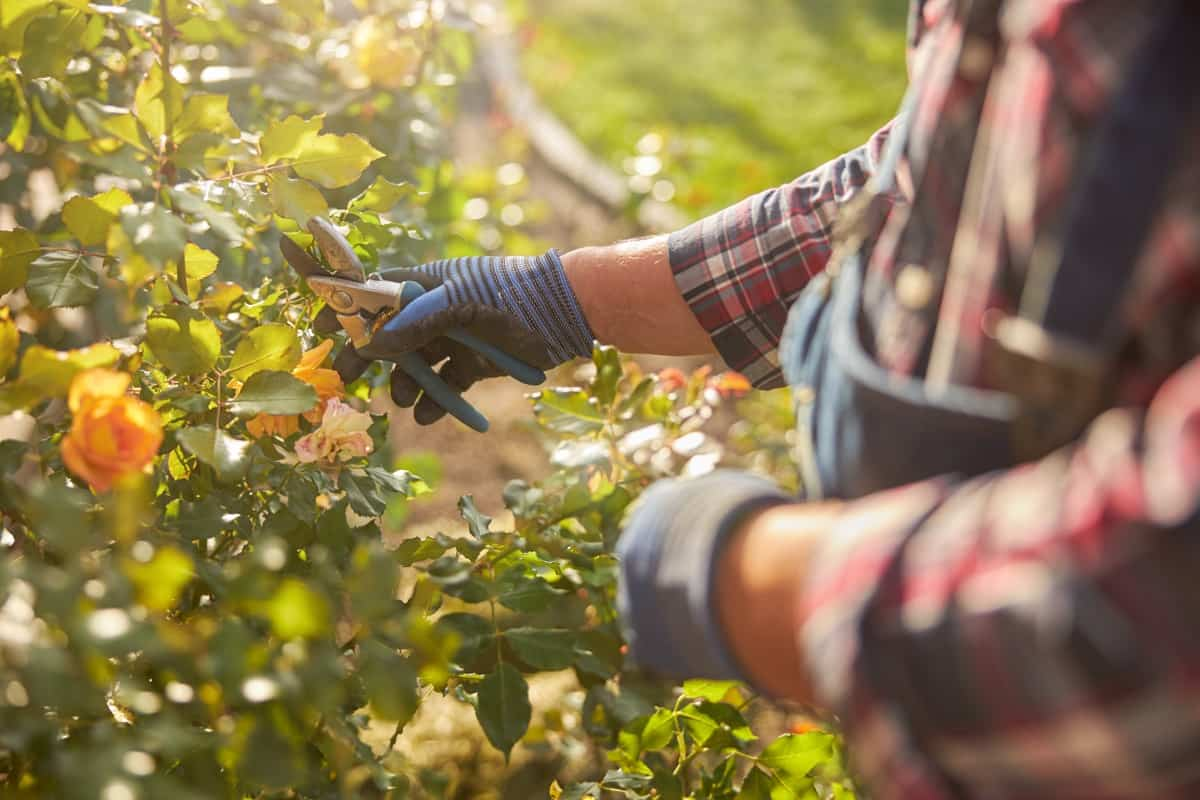
Insect Pests of Roses: Identification and Effective Management
Roses, those symbols of love and beauty, are susceptible to a range of insect pests that can cause significant damage to these delicate blooms. To maintain a thriving rose garden, it’s crucial to identify these pests and implement effective management strategies.
Termite (Microtermes obesi)
Damages: Termites pose a severe threat to roses as they damage root systems, which can ultimately lead to the death of the plant.
Control
- Implement deep plowing of the field to disturb termite nests.
- Drench the soil with Chlorpyriphos at 0.05%.
- iEnsure timely and proper irrigation to maintain soil health.
Red Scale (Aonidiella aurantii)
Damages: Red scales leave reddish-brown encrustations on rose shoots. Both young and adult scales feed on the sap of shoots, weakening the plant.
Control
- Prune-infested plant parts to remove the scales.
- Start with scale-free rose plants to prevent infestations.
- Employ chemical control by spraying dimethoate at 0.05% or malathion at 0.25%.
Two-Spotted Spider Mite (Tetranychus urticae)
Damages: Spider mites can cause discoloration, bronzing, and drying of rose leaves, affecting the overall health of the plant.
Control
- Prune severely infested plant parts to remove the mites.
- Consider using mitac at 0.05% or cascade at 0.15% for chemical control.
Hairy Caterpillar (Euproctis fracterna)
Damages: These caterpillars, in their larval stage, voraciously feed on rose leaves, buds, and flowers, resulting in defoliation and flower loss.
Control
- Inspect your roses for egg masses on the lower side of leaves and destroy them.
- Utilize light traps to attract and capture adult moths.
- Apply quinalphos at 0.05% to deter caterpillars.
Chaffer Beetle (Adoretus spp.)
Damages: Chaffer beetles emerge from the soil after dusk during the monsoon and feed on rose leaves, buds, and tender shoots. Their grubs feed on the plant’s roots.
Control
- Deep plowing is effective in killing the grubs and pupae.
- Utilize neem seed kernel extract at 2.5%.
- To deter chaffer beetles, spray chlorpyriphos at 0.05% during the evening.
- Application of phorate in the soil at 1.0 kg per hectare helps control grubs.
In case you missed it: How to Control Aphids on Roses: Home Remedies, Naturally, Organic and Chemical Management
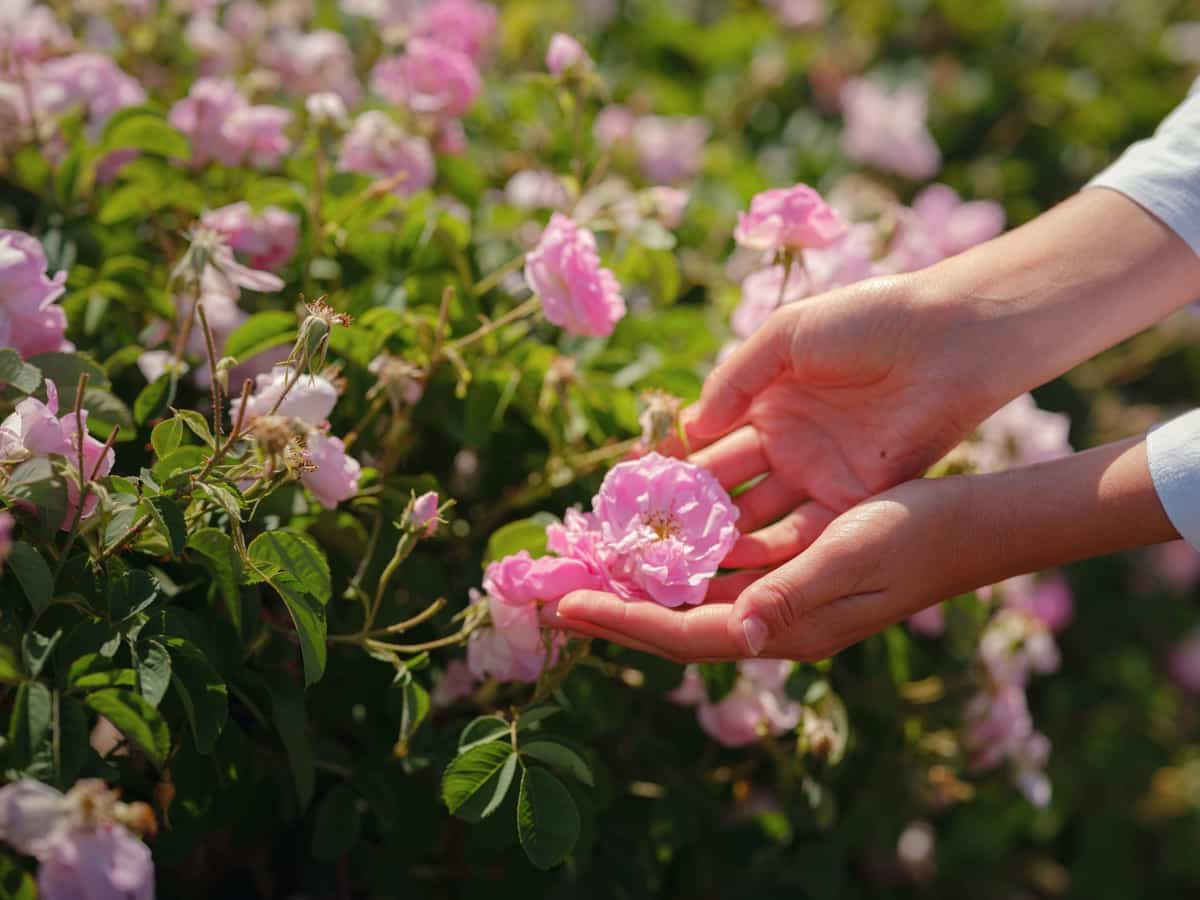
Aphid (Macrosiphum rosae)
Damages: Aphids are known for clustering around growing rose shoots and buds. They feed on cell sap, leading to deformities in the affected plant parts.
Control
- Utilize organic solutions by spraying neem or pongamia oil at 2%.
- Apply malathion at 0.15% to control aphid populations.
Thrips (Rhipiphorothrips & Scirtothrips)
Damages: Thrips cause damage by sucking sap from tender parts of new rose growth. Scirtothrips can be particularly troublesome in polyhouse rose cultivation.
Control
- Apply neem or pongamia oil at 2% to manage thrips.
- To effectively control Scirtothrips, consider spraying imidacloprid at 0.4 ml per liter.
Lesion Nematode (Pratylenchus convalleriae)
Symptoms: This nematode causes chlorosis in leaves, reduced flowering, and destruction of feeder roots.
Control
- Implement soil disinfection using methyl bromide or parathion.
- Use trap crops like Tagetes and Gaillardia.
- Consider planting nematode-resistant rose varieties such as ‘Major.’
Meloidogyne Nematode
Symptoms: Stunted plant growth and root galling are characteristic signs of Meloidogyne nematode infestations.
Control
- Flood the soil with a 0.1% nemaphos solution.
- Interplant marigolds with roses to discourage nematodes.
- Apply carbofuran or phorate at 1 gram per square meter.
- Utilize neem cake at 1 tonne per hectare to combat nematodes effectively.
Major Insect Pest of Roses and Management
Aphids: Macrosiphum Rosae
Aphids, those tiny soft-bodied insects, are frequent visitors to new shoots and buds of rose plants. They come in various colors, often green or occasionally light-brown, and sometimes possess wings. These critters can form colonies on the growing tips of rose plants, especially during spring and summer.
Aphids reproduce rapidly by siphoning off the plant’s sap with their piercing mouthparts. Among the species of aphids that target roses, the rose aphid (M. rosae) is a common and dominant one. They can multiply at an alarming rate due to parthenogenesis (reproduction without mating). Their feeding causes distorted growth and the secretion of honeydew, which fosters the growth of sooty mold, affecting photosynthesis and development.
Management
- Natural factors like predators, parasites, and diseases help control aphid populations.
- A forceful water spray can physically remove aphids from plants.
- Avoid excessive nitrogen fertilizer use as it attracts aphids.
- To reduce aphid populations, use insecticides like NSKE 5%, dimethoate 30 EC 2 ml/l, or imidacloprid 0.5 ml/l.
In case you missed it: Earning 70 Lakhs from Rose Cultivation in 5 Acre Polyhouse: The Success Story of a Flower Farmer
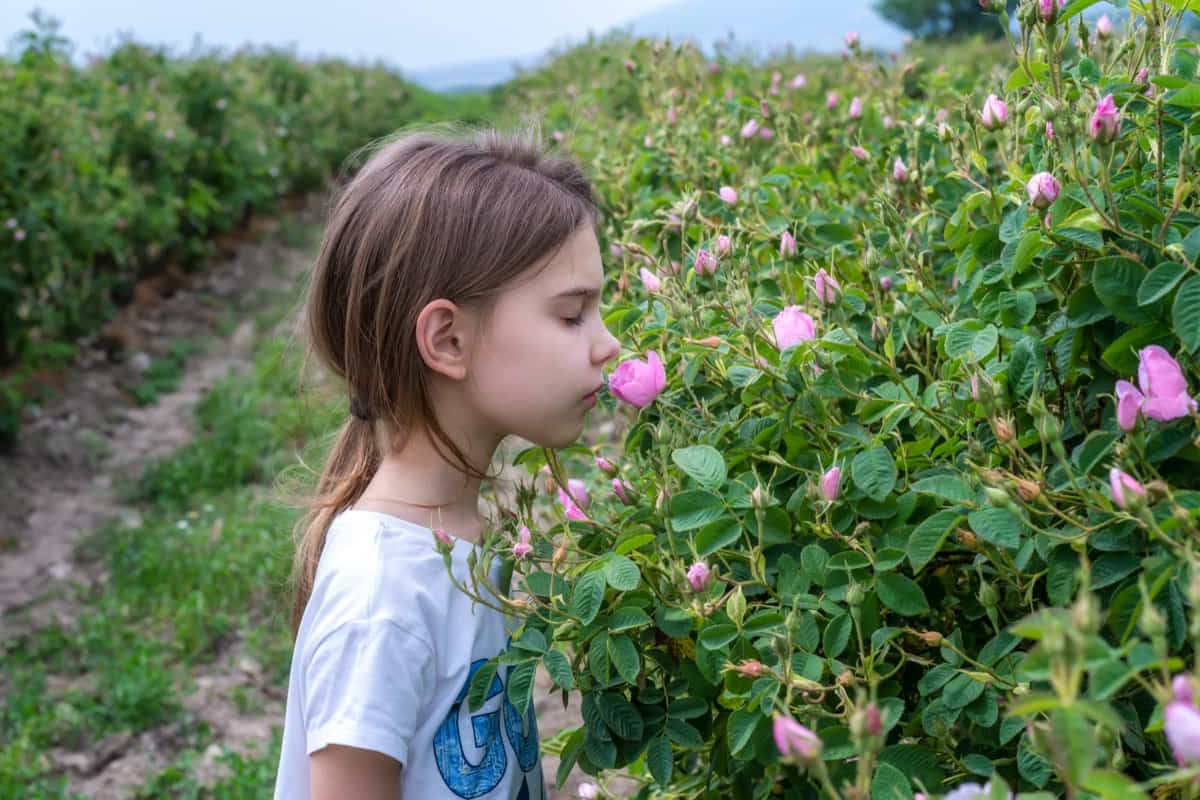
Whiteflies: Bemisia Tabci
Adult whiteflies are small, moth-like insects covered in a white waxy powder. They feed on the undersides of leaves, leaving light yellow patches due to sap-sucking. Their ability to produce honeydew can lead to the development of sooty mold on plants.
Management
- Avoid unnecessary insecticide treatments that disrupt biological control.
- Steer clear of excessive nitrogen fertilizer use.
- Use yellow sticky traps to attract whiteflies.
- Apply NSKE 5%, dimethoate 30 EC 2 ml/l, imidacloprid 0.5 ml/l, or thiamethoxam 25 WDG 0.3 g/l to reduce whitefly populations.
Thrips: Rhhiphorothrips Cruentatus
Thrips, tiny elongated insects, feed on roses by damaging flowers, reducing their aesthetic value. Their feeding results in silvery or bleached damaged areas on flower petals.
Management
- Avoid excessive nitrogen fertilizers.
- Use blue sticky traps to attract and capture thrips.
- Apply NSKE 5%, Acephate 75 SP 1.5 g/l, imidacloprid 0.5 ml/l, or thiamethoxam 25 WDG 0.3 g/l to control thrips.
- Spinosad is an effective foliar treatment for thrips.
Leafhoppers: Edwardsiana Rosae
Leafhoppers feed on the undersides of leaves and stems, causing stippling and yellowing of leaves.
Management
- Use foliar sprays with Lamda cyhalothrin, imidacloprid, or dimethoate.
- Soil drenches of imidacloprid can provide control.
- Avoid excessive nitrogen fertilizers.
Spider Mites: Tetranychus Cinnabarinus
Spider mites are not insects but can cause significant damage by sucking sap from the lower leaf surfaces.
Management
- Predatory mites, adverse environmental factors, and other factors can naturally control mite populations.
- Spinosad is an effective foliar treatment.
- Avoid overusing insecticides that disrupt beneficial insects.
- Apply dicofol or wettable sulfur when necessary.
Effective Rose Pest Management: Embracing Integrated Pest Management (IPM)
Integrated Pest Management (IPM), defined by FAO experts in 1968, offers a comprehensive approach to pest management. It focuses on maintaining pest populations below economically damaging levels while considering the environment and pest dynamics. Rather than just controlling pests, IPM emphasizes managing them. This approach acknowledges the fragile balance of agro-ecosystems.
In case you missed it: How to Grow Rosemary in USA: Soil, Propagation, Planting, Care, and Farming Tips
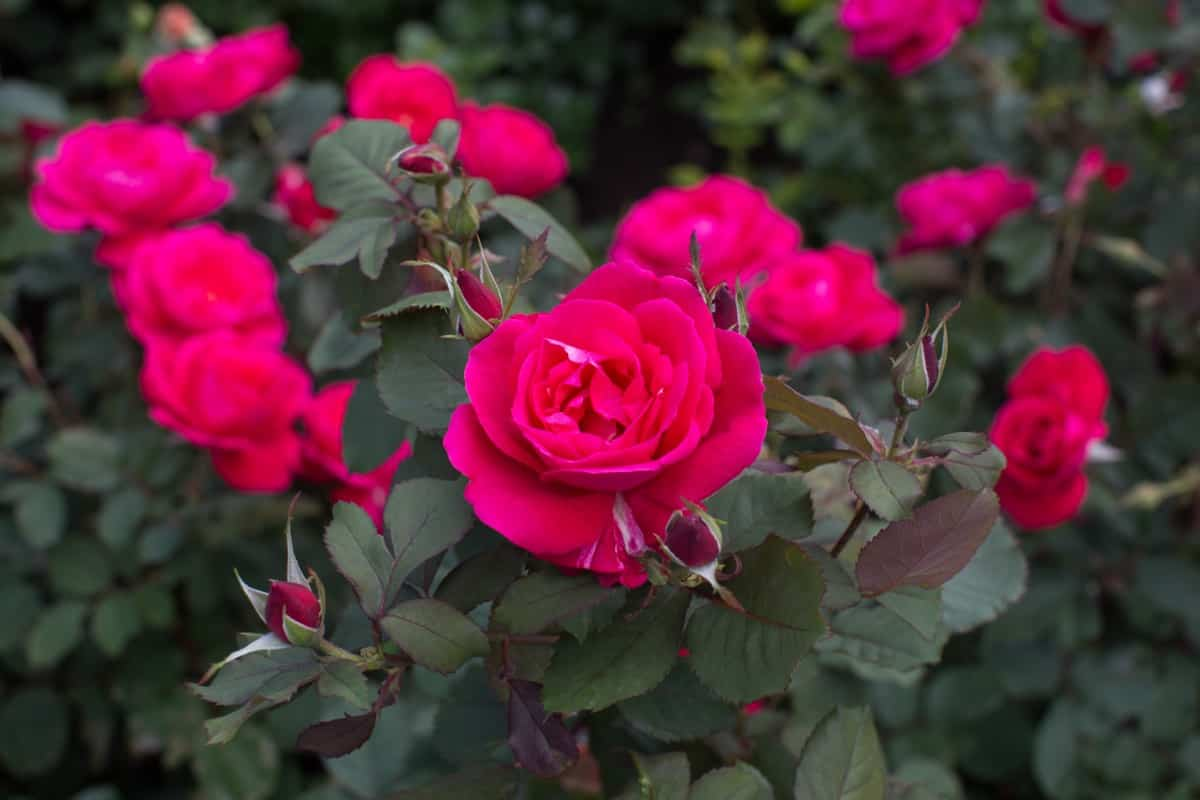
In IPM, multiple techniques are employed in harmony, including natural methods like host resistance and biological pest control, alongside pesticide use and cultural practices. The key idea is to keep pest populations in check to prevent extensive damage.
Selecting the Best Insecticide for Rose Pests
Greenfly, whitefly, black fly, beetles, and fungi are wreaking havoc, threatening to devour your precious blooms. From unsightly holes in the leaves to the dreaded black spot, roses face numerous threats. To select the best insecticide for your roses, you must first identify your primary pest issue.
Verdana Organic Cold Pressed Pure Neem Oil
- What it Targets: Neem oil is a versatile solution effective against various pests, including aphids, scale, and fungal diseases like black spots.
- Why it’s a Winner: This neem oil is pure and unrefined, making it a safe and eco-friendly choice for your roses. It also has applications beyond pest control, making it addition to your gardening toolkit.
Bonide Eight Insect Control
- Best for Heavy Infestations: Bonide Eight Insect Control is your go-to solution if your roses are dealing with severe infestations.
- What it Targets: It’s effective against many insects, including beetles, aphids, and more.
BioAdvanced All-In-One Rose and Flower Care
- Fungicide & Fertilizer: BioAdvanced’s product isn’t just about pest control; it also includes fertilizer and fungicide, offering holistic care for your roses.
- What it Targets: This concentrate tackles insects and fungal diseases, making it a convenient all-in-one solution.
Monterey LG6130 Garden Insect Spray
- With Spinosad: If you’re looking for an insecticide with Spinosad, which is effective against thrips, caterpillars, and other pests, this is your choice.
- What it Targets: This insect spray covers various rose pests.
Choosing the right insecticide for your roses depends on the specific pest challenges you face. For example, neem oil is eco-friendly, while Bonide Eight is your heavy-duty choice for severe infestations. BioAdvanced offers a comprehensive approach with added benefits like fertilization and fungal disease control, and Monterey LG6130 utilizes Spinosad for pest control.
Bees, among other pollinators, play a crucial role in food production. Thus, using insecticides responsibly is vital, considering the potential harm to these beneficial creatures. Integrated pest management (IPM) practices are encouraged. These include monitoring pests, using natural predators, and deploying chemicals only when necessary. This approach minimizes environmental impact while effectively protecting your roses.
Frequently Asked Questions (FAQ) Related to Pest Management in Rose Crop
What are the Major Insect Pests of Roses?
Aphids, whiteflies, thrips, and scale insects are major insect pests that can harm rose plants.
What Kind of Damage Can These Pests Cause to Roses?
These pests can damage roses by feeding on their leaves, stems, and flowers. This feeding can result in deformed growth, discoloration, and reduced flowering.
Which Insecticides are Best for Managing These Rose Pests?
Effective insecticides for roses include imidacloprid, spinosad, and neem oil. They can help control pests while minimizing environmental harm and beneficial insects.
How Should I Apply Insecticides to My Roses?
Follow the instructions on the insecticide label. Typically, you’ll need to dilute the insecticide in water and then spray it evenly on the affected plants at recommended 15-20 intervals for application. Make sure to cover both the upper and lower sides of the leaves.
In case you missed it: How to Start Rose Farming in the USA: A Step-by-Step Production Guide for Planting to Harvesting
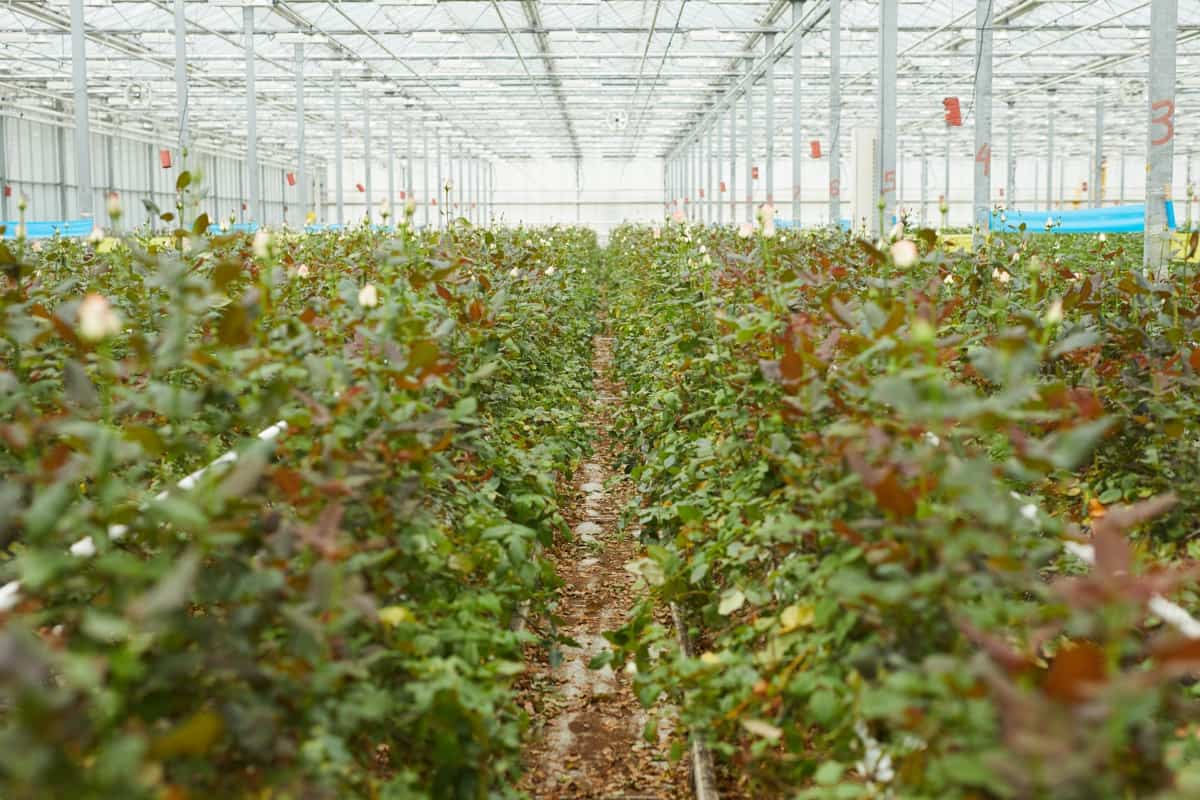
Are there Natural ways to Control Rose Pests?
Yes, you can encourage natural predators like ladybugs and lacewings to help control pest populations. Additionally, maintaining good garden hygiene and avoiding over-fertilization can reduce pest infestations.
When is the Best Time to Apply Insecticides to Roses?
It’s often best to apply insecticides early in the morning or late afternoon when beneficial insects are less active. Be sure to apply them when the weather is calm and not too hot.
Conclusion
Effective pest management in rose crops is essential to ensure healthy and vibrant plants. Among the major insect pests of roses, aphids, whiteflies, and thrips are common culprits. The best insecticides for roses include imidacloprid, Spinosad, and neem oil, which provide reliable control without harm to beneficial insects and the environment.
- Goat Farming Training Programs in India: A Beginner’s Guide
- Types of Pesticides Used in Agriculture: A Beginner’s Guide
- Economical Aquaculture: A Guide to Low-Budget Fish Farming
- 15 Common Planting Errors That Can Doom Your Fruit Trees
- How to Make Houseplants Bushy: Effective Tips and Ideas
- Innovative Strategies for Boosting Coconut Pollination and Yield
- Pollination Strategies for Maximum Pumpkin Yield
- The Complete Guide to Chicken Fattening: Strategies for Maximum Growth
- Natural Solutions for Tulip Problems: 100% Effective Remedies for Leaf and Bulb-Related Issues
- Revolutionizing Citrus Preservation: Towards a Healthier, Greener Future
- Natural Solutions for Peony Leaf and Flower Problems: 100% Effective Remedies
- Maximizing Profits with Avocado Contract Farming in India: A Comprehensive Guide
- Natural Solutions for Hydrangea Problems: 100% Effective Remedies for Leaf and Flowers
- The Ultimate Guide to Choosing the Perfect Foliage Friend: Bringing Life Indoors
- From Sunlight to Sustainability: 15 Ways to Use Solar Technology in Agriculture
- The Ultimate Guide to Dong Tao Chicken: Exploring from History to Raising
- The Eco-Friendly Makeover: How to Convert Your Unused Swimming Pool into a Fish Pond
- Mastering the Art of Delaware Chicken Farming: Essentials for Healthy Backyard Flocks
- 20 Best Homemade Fertilizers for Money Plant: DIY Recipes and Application Methods
- How to Craft a Comprehensive Free-Range Chicken Farming Business Plan
- Brighten Your Flock: Raising Easter Egger Chickens for Beauty and Bounty
- How to Optimize Your Poultry Egg Farm Business Plan with These Strategies
- Subsidy for Spirulina Cultivation: How Indian Government Schemes Encouraging Spirulina Farmers
- Ultimate Guide to Raising Dominique Chickens: Breeding, Feeding, Egg-Production, and Care
- Mastering the Art of Raising Jersey Giant Chickens: Care, Feeding, and More
- Ultimate Guide to Raising Legbar Chickens: Breeding, Farming Practices, Diet, Egg-Production
- How to Raise Welsummer Chickens: A Comprehensive Guide for Beginners
- How to Protect Indoor Plants in Winter: A Comprehensive Guide
- Ultimate Guide to Grow Bag Gardening: Tips, Tricks, and Planting Ideas for Urban Gardeners
- Guide to Lotus Cultivation: How to Propagate, Plant, Grow, Care, Cost, and Profit
- Agriculture Drone Subsidy Scheme: Government Kisan Subsidy, License, and How to Apply Online
- Ultimate Guide to Raising Araucana Chickens: Breed Profile, Farming Economics, Diet, and Care
- Bringing Hydroponics to Classroom: Importance, Benefits of Learning for School Students
- Ultimate Guide to Raising Polish Chickens: Breed Profile, Farming Economics, Diet, and Care
- Ultimate Guide to Raising Australorp Chickens: Profile, Farming Economics, Egg Production, Diet, and Care
- Silkie Chicken Farming: Raising Practices, Varieties, Egg Production, Diet, and Care